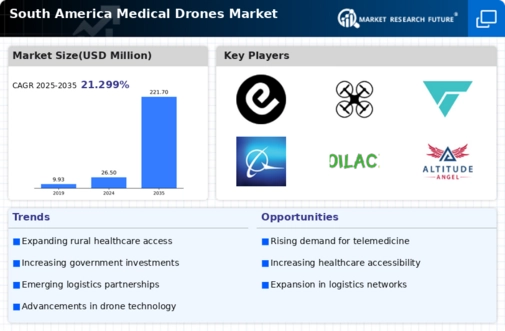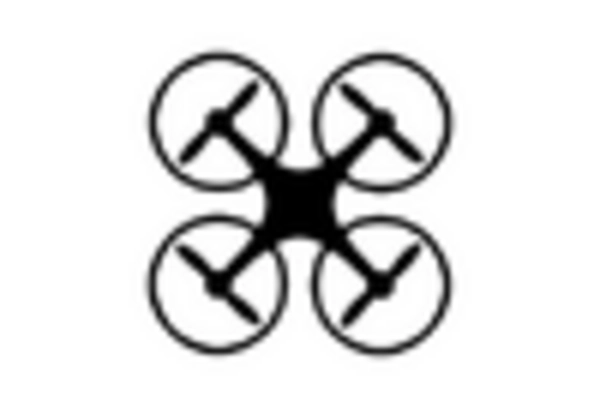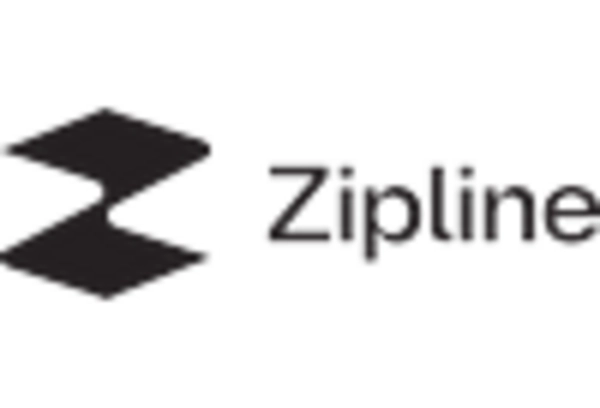Advancements in Drone Technology
Technological advancements are pivotal in shaping the medical drones market in South America. Innovations in drone design, battery life, and payload capacity enhance the operational efficiency of medical deliveries. The introduction of autonomous navigation systems and improved safety features further boosts the appeal of drones in healthcare logistics. As technology continues to evolve, the market is expected to witness a compound annual growth rate (CAGR) of around 12% over the next few years. This growth reflects the increasing confidence of healthcare providers in utilizing drones for critical medical supply transport.
Government Initiatives and Funding
Government initiatives play a crucial role in the expansion of the medical drones market in South America. Various countries are allocating funds to support the integration of drone technology into healthcare systems. For instance, Brazil and Colombia have launched pilot programs aimed at testing drone deliveries in remote areas. These initiatives not only facilitate access to medical supplies but also stimulate local economies. The investment in drone technology is expected to reach over $50 million by 2026, reflecting the commitment of governments to enhance healthcare delivery through innovative solutions.
Rising Demand for Timely Medical Deliveries
The medical drones market in South America experienced a notable surge in demand for timely medical deliveries. This is primarily driven by the need for rapid transportation of medical supplies, including vaccines, blood products, and essential medications. In regions with challenging terrain or limited access to healthcare facilities, drones offer a viable solution to bridge the gap. According to recent estimates, the market is projected to grow at a CAGR of approximately 15% over the next five years. This growth is indicative of the increasing reliance on drones to enhance healthcare logistics, thereby improving patient outcomes and reducing delivery times.
Increasing Healthcare Infrastructure Challenges
The medical drones market in South America is influenced by the increasing challenges faced by healthcare infrastructure. Many regions struggle with inadequate transportation networks, which hampers the timely delivery of medical supplies. Drones present a practical alternative, capable of navigating difficult terrains and reaching isolated communities. This necessity is underscored by the fact that approximately 30% of the population in rural areas lacks access to essential health services. As healthcare providers seek efficient solutions, the adoption of drones is likely to rise, thereby driving market growth.
Public Awareness and Acceptance of Drone Technology
Public awareness and acceptance of drone technology are essential drivers for the medical drones market in South America. As communities become more informed about the benefits of drone deliveries, including faster access to medical supplies, the demand for such services is likely to increase. Educational campaigns and demonstrations have been instrumental in fostering a positive perception of drones. Surveys indicate that approximately 70% of the population in urban areas supports the use of drones for medical deliveries. This growing acceptance is expected to facilitate the expansion of the market, as healthcare providers seek to meet the evolving needs of patients.


















Leave a Comment